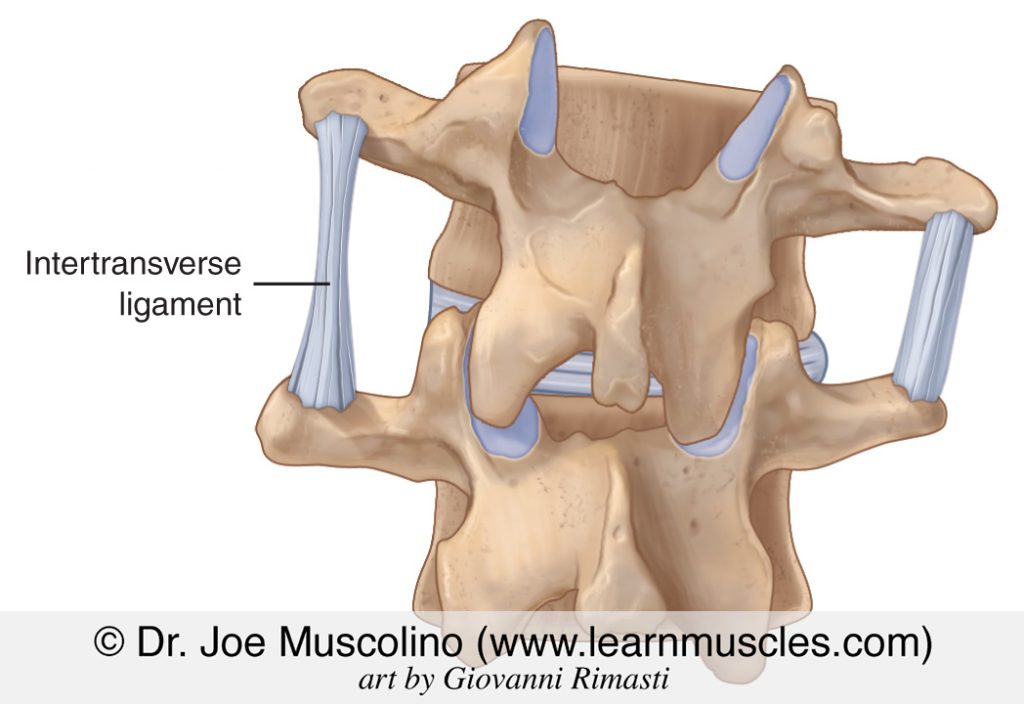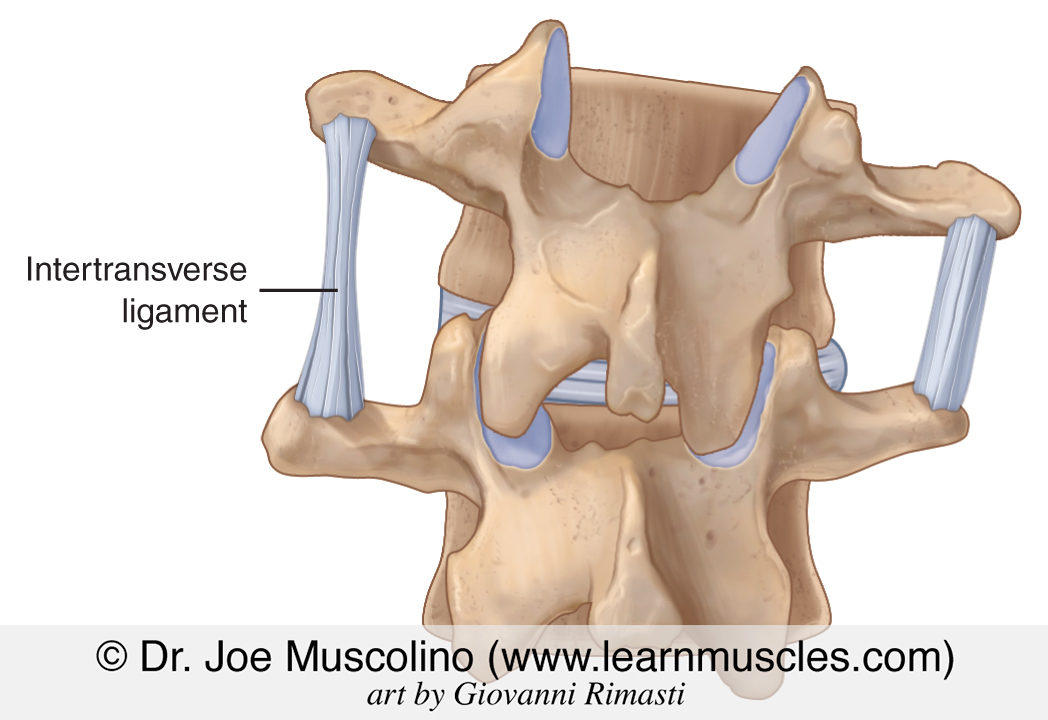- Click here for access to the full Anatomy Glossary.
- Right click on the image for a downloadable file of this muscle.
- Use of this artwork requires proper credit to be given (Permission: Dr. Joe Muscolino. www.learnmuscles.com)
Intertransverse ligaments of the spine run from the transverse process of one vertebra to the transverse process of the next vertebra.

Intertransverse ligaments become taut with lateral flexion to the opposite side. Posterior view. Permission: Dr. Joe Muscolino (www.learnmuscles.com).
- Intertransverse ligaments are oriented in the frontal plane, so they limit motion in the opposite direction, in other words, opposite-side lateral flexion (contralateral lateral flexion).
- In the illustration here, the left-side intertransverse ligament becomes taut with right-side lateral flexion, thereby limiting that motion.
Notes:
- “Inter” comes from Latin for “between”. Hence, “intertransverse” means “between transverse”.
- Intertransverse ligaments would also become taut (and therefore limit) the end ranges of rotation to each side.

